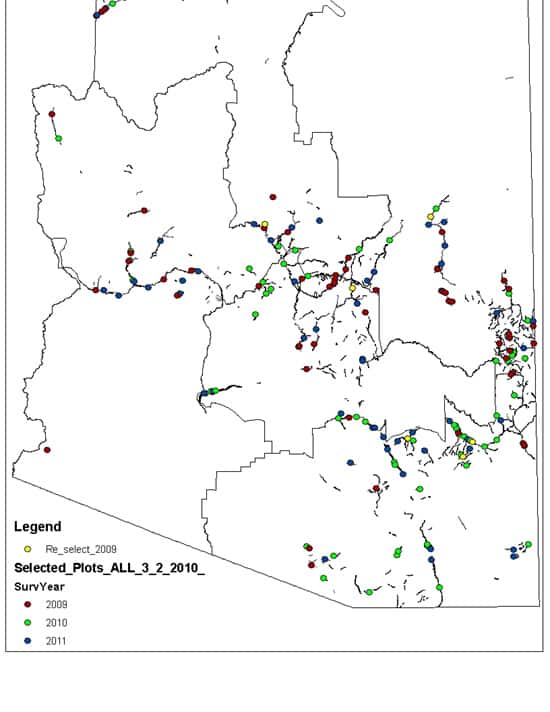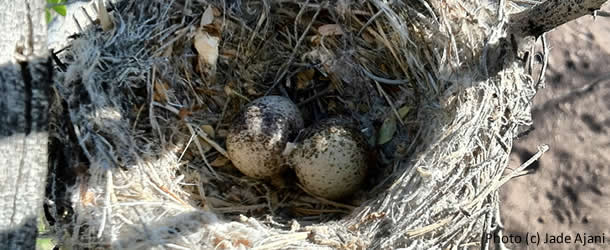In 2005 various partners, under the umbrella of the Arizona Bird Conservation Initiative, began seriously discussing the need for a Coordinated Bird Monitoring Program in the state. Although various bird monitoring efforts exist (Breeding Bird Surveys, Christmas Bird Counts, etc.), Arizona has some special circumstances. These surveys miss some major bird groups in the state. In particular, breeding riparian species, early desert breeders, late monsoon breeders, wintering waterbird species, nocturnal species and “border birds” (those whose range barely extends into Arizona) are poorly represented in these existing monitoring programs.

Because of this, the Arizona Coordinated Bird Monitoring Program was created as a statewide all-bird monitoring effort. The goal: provide long-term population trend data and evaluate the effects of management actions on birds and habitats in the state.
In the words of the USGS’ Jon Bart, “We can do half the monitoring and get twice the information if we coordinate our efforts.”
It isn’t just about going out and counting birds. The Arizona Coordinated Bird Monitoring Program includes detailed sampling frames and methodologies, pooling of funding, a large volunteer corps, organized data management and sharing through the Avian Knowledge Network, workshops, and publications, and coordination with other national and international monitoring programs.
The monitoring effort, overseen by the Arizona Bird Conservation Initiative, involves multiple partners, including the Arizona Game and Fish Department, the Sonoran Joint Venture, the Department of Defense, Audubon Arizona, Tucson Audubon, Bureau of Land Management, Arizona State Parks, Salt River Project, The Nature Conservancy, US Bureau of Reclamation, US Forest Service, US Fish & Wildlife Service, Rocky Mountain Bird Observatory, Great Basin Bird Observatory, Wild at Heart, and many individual volunteers.
Since 2009 the partnership has completed multi-year surveys for both riparian and desert breeding birds. Next they are turning their attention to grasslands. They finished a pilot season of monitoring in 2014 and plan to begin three years of surveys in 2015 on grasslands throughout the state.
These efforts have identified new breeding locations that were not in the Arizona Breeding Bird Atlas. And from a bigger picture perspective, new knowledge of bird densities will allow the Sonoran Joint Venture to develop realistic bird population objectives and guide our conservation activities. Ultimately this is a program that we hope can be exported to other areas, including the SJV region in Mexico and beyond.
To learn more about Arizona Coordinated Bird Monitoring, including protocols, how to get involved, or to request reports for finished efforts, contact SJV Science Coordinator Carol Beardmore.

